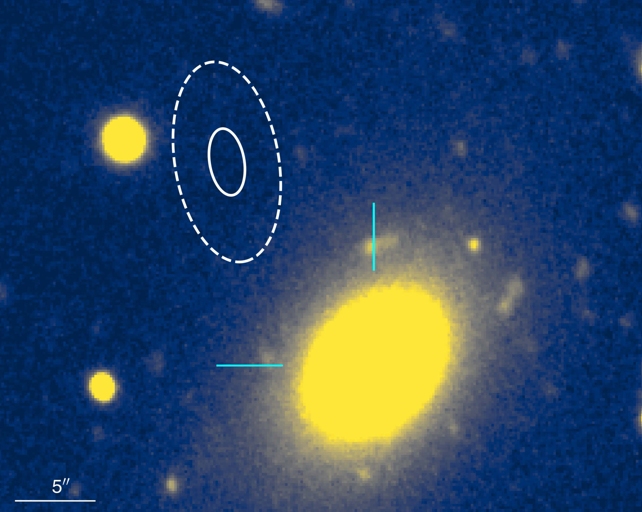Products You May Like
Fast radio bursts (FRBs) are intense flashes of radio light that last for only a fraction of a second.
They are likely caused by the intense magnetic fields of a magnetar, which is a highly magnetic neutron star. Beyond that, FRBs remain a bit of a mystery.
We know that most of them originate from outside our galaxy, though the few that have occurred within our galaxy have allowed us to pin the source on neutron stars.
We also know that some of them repeat, meaning that FRBs can’t be caused by a cataclysmic event such as a supernova. Thanks to one repeating FRB, we now know something new about them.

In a new study published in The Astrophysical Journal Letters, astronomers looked at FRB 20240209A, which was first observed by the CHIME radio telescope in February 2024.
The FRB happened to be a repeater and was observed 21 times between February and June. Because it kept repeating, the team was able to observe six of the FRB events from a smaller, companion observatory 60 kilometers away. This allowed the team to pinpoint the source even though it was two billion light-years away.
They found a couple of unusual things. The first is that the FRB originated from the edge region of a galaxy. Most FRBs occur in the more central region of a galaxy because that’s where stars form and therefore where you’re more likely to find neutron stars.
The second was that this particular galaxy is more than 11 billion years old, and is well past its star-forming period. What’s surprising about that is that neutron stars are the remnants of massive stars that die as supernovae.
Large stars have cosmically short lifetimes, so the fact that this FRB occurred in an old, long-dead galaxy means that the neutron star that generated it must also be old.
The general reasoning was that FRBs are caused by young magnetars. The thought is that they could be caused by magnetic flares, similar to solar flares of the Sun. But since neutron stars can’t generate new heat, they cool and become inactive over time. So we shouldn’t see old neutron stars generating FRBs. This study proves that old stars can create FRBs.
One explanation for this is that the FRB might have occurred not within the galactic edge itself, but rather in a dense globular cluster orbiting at the edge of the galaxy.
The galaxy is too far away for us to distinguish between these two options, but globular clusters are known to have numerous stellar mergers. One possibility is that this repeating FRB was caused by merging magnetars. As their magnetic fields merged and realigned, bursts of radio energy were released to create the FRB.
It will take more observations to be sure, but it is now clear that the astrophysical processes that create FRBs are more diverse than we thought.
This article was originally published by Universe Today. Read the original article.
